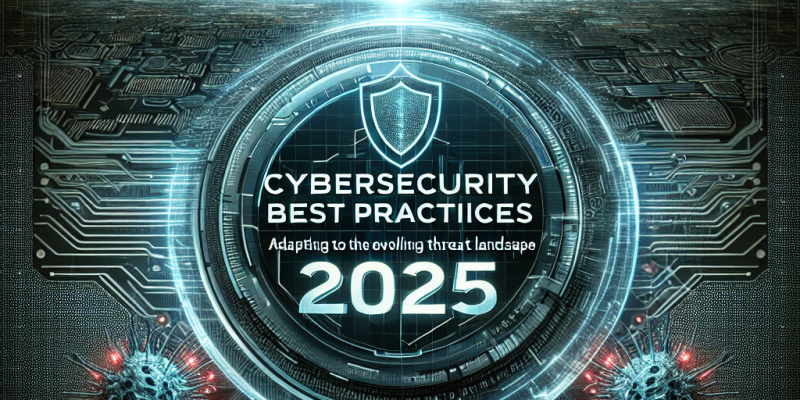Cybersecurity Best Practices for 2025: Adapting to the Evolving Threat Landscape

As we move deeper into 2025, the importance of cybersecurity cannot be overstated. With new technologies emerging every day, cyber threats are becoming more sophisticated and complex. It’s essential for individuals and businesses to stay informed and proactive in defending against these challenges. Here are several best practices to consider for effective cybersecurity this year.
1. Regular Software Updates
Ensuring that all software, including operating systems, applications, and antivirus programs, are regularly updated is crucial. Software updates often include patches that fix vulnerabilities that hackers can exploit. Make it a habit to enable automatic updates where possible, so you do not miss important security fixes.
2. Use Strong Passwords and Multi-Factor Authentication
Weak passwords are one of the easiest ways for criminals to gain access to your accounts. Use a combination of letters, numbers, and symbols to create strong passwords. Additionally, enable multi-factor authentication (MFA) whenever it’s available. MFA adds an extra layer of security, requiring not just a password but also a second piece of information (like a code sent to your phone).
3. Educate Employees and Users
Human error remains a significant factor in many security breaches. Conduct regular training sessions for employees on best practices, including recognizing phishing emails and safe browsing habits. Create a culture of cybersecurity awareness to empower everyone in your organization to be vigilant.
4. Implement a Zero Trust Security Model
The Zero Trust model operates on the principle that no user or device should be trusted by default. Verify all connections, even those inside your network. This means regularly checking the identity and security posture of users and devices before granting access to sensitive resources.
5. Regularly Back Up Data
Data breaches can result in loss of critical information. Regularly back up your data and ensure that backups are stored securely and are not easily accessible by unauthorized users. This practice can save you from devastating losses in the event of a cyberattack, particularly ransomware attacks.
6. Monitor Network Traffic
Invest in network monitoring tools that can help you detect unusual patterns or behaviors. These tools can alert you to possible intrusions or data leaks. Understanding your network traffic can help identify potential threats early, allowing for quicker responses.
7. Secure Mobile Devices
With more employees using mobile devices for work, securing these devices is more important than ever. Ensure that mobile devices are equipped with security features such as encryption, remote-wipe capabilities, and screen locks. Encourage users to download apps only from trusted sources.
8. Know Your Third-Party Risks
Third-party vendors can often be a weak link in the security chain. Evaluate the security measures of vendors and partners who have access to your data. Establish clear security requirements and perform regular audits to ensure they meet your standards.
9. Develop an Incident Response Plan
Preparation is key when it comes to handling cyber incidents. Have an incident response plan in place that outlines procedures to follow if a breach occurs. This plan should include roles and responsibilities, communication strategies, and steps for damage control. Regularly review and practice your plan to ensure everyone knows their role.
10. Stay Informed
Cybersecurity is a constantly changing field. Staying informed about the latest threats and trends is vital. Follow relevant blogs, news outlets, and cybersecurity organizations to keep updated on best practices and emerging threats.
Conclusion
As cyber threats continue to evolve in 2025, staying ahead of the curve requires diligence and adaptability. By implementing these best practices, individuals and organizations can better protect themselves against potential breaches and ensure their data remains secure. Cybersecurity is not just about technology; it’s about creating a culture of awareness and proactive defense.














